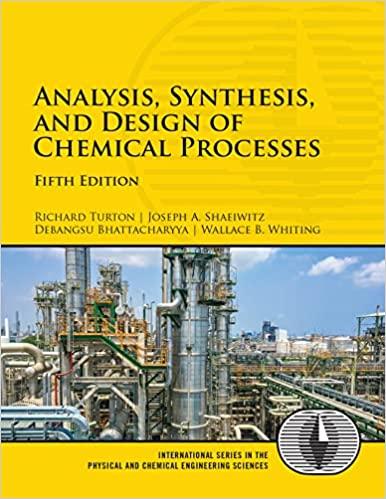For the solution to Problem 22.7(a), and assuming that the reactor is packed with inert ceramic spheres,
Question:
For the solution to Problem 22.7(a), and assuming that the reactor is packed with inert ceramic spheres, 5 mm in diameter with a voidage of 0.45, and that the reactor has a Length/Diameter ratio of 8:1, determine the pressure drop across the reactor. For this problem use an average viscosity of the process gas of 26.8 × 10-6 kg/m/s and an average gas density calculated from the ideal gas law. Comment on the accuracy of using these average property values to determine the pressure drop across the reactor.
Problem 22.7(a)
Consider the following reactionafor the production of benzene via the homogeneous thermal dealkylation of toluene in the temperature range 700°C to 950°C:![C7H8+ H C6H6 + CH4 benzene toluene 25,614 0.5 -Ttol = 3.0 100 e Ctoc [mol/m of reactor/s] TIK CH](https://dsd5zvtm8ll6.cloudfront.net/images/question_images/1699/4/4/1/183654b6a1fee54d1699441182689.jpg)
where the concentrations of reactants are in mol/L reactor and the temperature is in K. The heat of reaction is −52.0 kJ/mol (at 900°C) and −50.5 kJ/mol (at 700°C), and the average specific heats of the reactor feed and effluent are 3.3216 kJ/kg/K (at 950°C) and 3.042 kJ/kg/K (700°C).
a. If feed enters the reactor at 700°C and 25 bar, solve the material and energy balances for a plug flow reactor to determine the volume of reactor needed to give 90% conversion of toluene. The feed to the reactor comprises 80 kmol/h of toluene and 320 kmol/h of hydrogen. Plot the conversion and temperature profiles in the reactor.
Step by Step Answer:

Analysis Synthesis And Design Of Chemical Processes
ISBN: 9780134177403
5th Edition
Authors: Richard Turton, Joseph Shaeiwitz, Debangsu Bhattacharyya, Wallace Whiting





